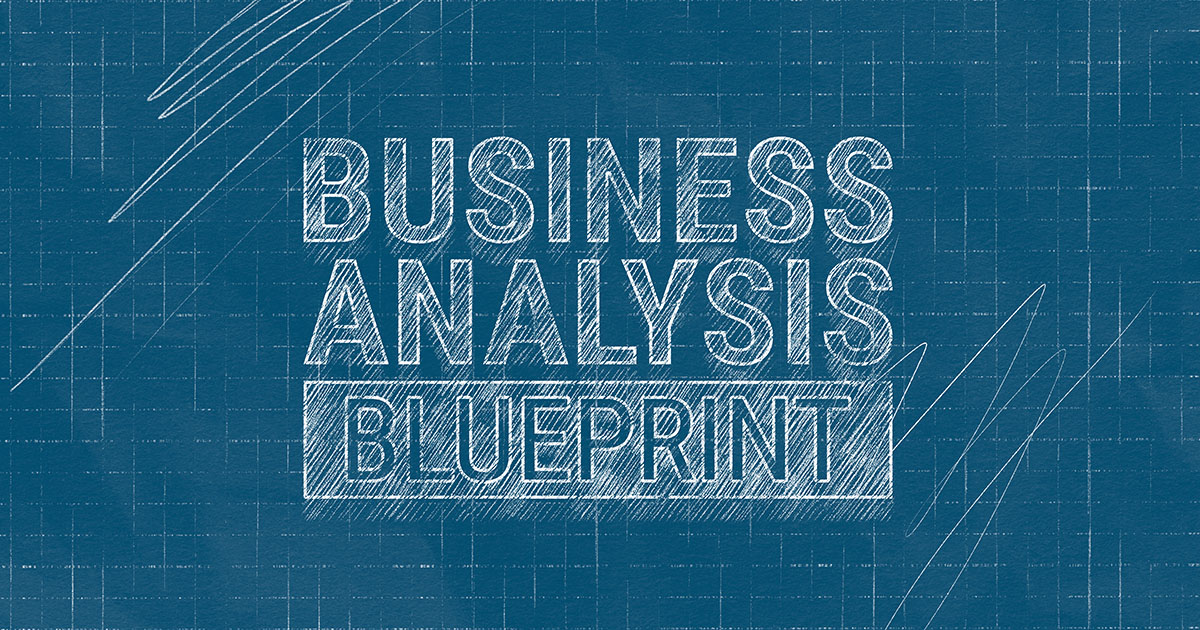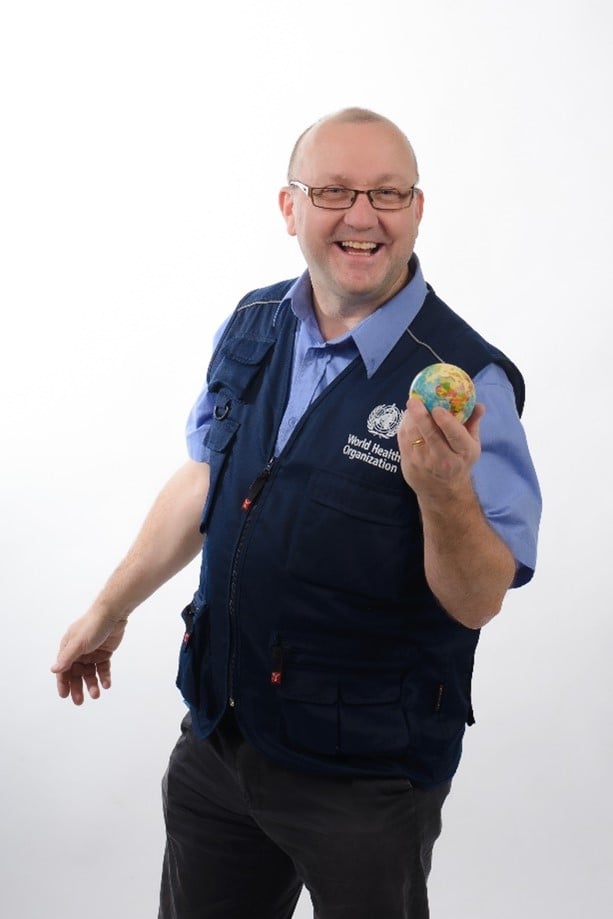Business Analysis Blueprint
Kevin Crampton
Disclaimer: The views and opinions expressed in this article are those of the author and may not reflect the perspectives of IIBA.Receive free IIBA updates and exclusive content!

In his role at the World Health Organization (WHO) in Geneva, Switzerland, senior business analyst Kevin Crampton is attached to the public health emergency department, which works across a varied portfolio of pandemics, disasters, and other health crises.
To promote best practices within the organization, in 2021 Kevin set up the WHO Business Analysis Community, which encourages business analysts to collaborate, share ideas, and support each other.
As impressive as that sounds, it’s all a little too dry and serious for Kevin. He’s quick to point out that he also organizes year-end parties as an excuse to avoid “real work.”
His self-deprecating sense of humour and varied role at the WHO—as well as his thoughts on artificial intelligence, the pandemic, and creative writing—are the subject of this month’s Business Analysis Blueprint.
Tell us a little bit about your business analysis journey and how it all got started.
I started life as a coder but soon realized that I enjoyed interacting with the users just as much as shepherding the zeros and ones.
I particularly enjoyed learning about new business areas and processes and looking into possible solutions, so this naturally led to the role of a business analysis professional.
Fundamentally, it’s probably down to nosiness and wondering what other people do for a living.
Describe your current role and what it’s like to work at the WHO.
The role is wonderfully varied—one team may want a simple dashboard showing the deployment of emergency teams, while another might need a smartphone app for tracking patients in the field.
The pace can be frantic during a rapid onset emergency (such as an earthquake or conflict). But the sense of working for the benefit of real end users, often in precarious situations, is always rewarding.
It has more than its fair share of politics, but I always feel privileged to work there.
How do you manage the WHO’s business analysis community? How is your work different from your previous business analysis role?
The community is a deliberately casual and informal affair, set up to share resources, ideas, and mentor and support one another. I see myself more as a facilitator than a manager, allowing like-minded business analysis professionals to come together and collaborate for the common good.
Compared to previous jobs, my current business analysis role has a bit more coordination to it. It sometimes feels like bossing people around!
How did the impact of the pandemic change your work or the application of business analysis in general?
In addition to the uptick in the workload and the pressures of a global pandemic on the WHO, the move to remote work changed the business analysis dynamic somewhat.
At the same time, we all improved our skills at facilitating virtual workshops or working with stakeholders without the subtle clues of body language or the ability to bond in person over a coffee.
I think that was true of business analysis professionals everywhere. One thing I miss about it are the coffee chats!
What made you pursue the Certified Business Analysis Professional (CBAP) designation and how has it impacted your career?
I wanted to formalize the way I approached and delivered my work and learn a common terminology for working with other business analysis professionals.
The CBAP was the go-to certification to improve my maturity as a business analysis professional and the quality of what I do. It earned me recognition within the WHO and lent legitimacy to the setup of the business analysis community.
It was also a great excuse to catch the bus to Munich, where I sat the exam, which has excellent beer and roasted pork knuckles.
How do you see the business analyst role evolving in the next five years?
The advent of natural language models like ChatGPT has some exciting applications in terms of business analysis work.
Imagine specifications or strategy documents developed from a partnership between a trained business analysis professional and an artificial intelligence actor. Or rapid solution optioning from thousands of sources by a machine brain that’s far quicker than a human brain!
I think we’ll see growing opportunities for the technology employed in the service of business analysis. I, for one, welcome our new digital overlords.
What was the biggest challenge of your career and how did you overcome it?
I think it took me a long time to feel competent enough at what I was doing to start offering opinions and advice in some business contexts. As a result, I think my career got off to quite a slow start, because I spent years building knowledge and experience but not sharing it for fear that I was still too junior.
In many cases I was, but I would have learned and evolved quicker had I been more willing to share (even incorrect) thoughts and ideas.
Don’t be afraid to make mistakes. They made me the man I am today!
What do you like to do outside of work to unwind?
I like writing, mostly fiction and magazine articles. Maybe that love of the written word feeds into my business analysis work a bit too.
I also set up and run the WHO Art Gallery, which runs exhibitions and an online eGallery for anyone who works at the organization globally. It’s a nice creative balance with the more techie work I do and another excuse for coffee drinking and pretentious conversations, two of my passions.
What’s your must-read, desert island book?
Hmm…that’s a hard one. There are so many great candidates that I’m hard pressed to pick just one. I’d say the Holy Bible, anything by Haruki Murakami, or obscure 70s fantasy by Keith Roberts.
One set of books I wouldn’t take is the fantasy trilogy I wrote for my kids. After all the hours I poured into it, I wonder if I’ll ever have the mental force to even open them again!
Search my name and “The Cliff” on Amazon and buy them for your worst enemy (they’re that bad).

Know someone who is making an impact as a business analysis professional? Reach out to brand@iiba.org to have them featured in our next Business Analysis Blueprint.
About the Author

Robert McClements is the Communications and Media Relations Specialist at IIBA. With over six years of communications experience at non-governmental organizations, he contributes to IIBA’s marketing and communications efforts in support of the business analysis profession and community. Residing in his hometown of Montreal, Robert enjoys spending time with his family, listening to music, and reading.



